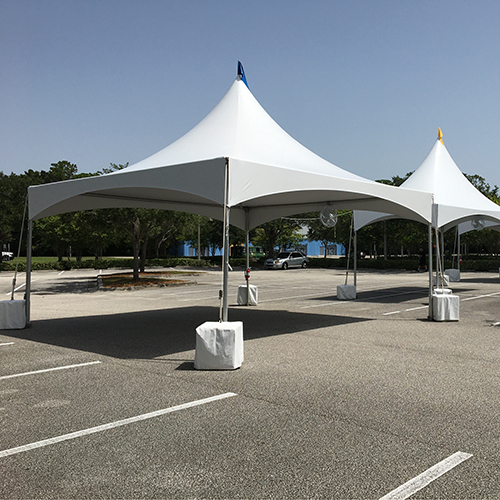Premium Tent Hire for Weddings and Events at Affordable Prices
Premium Tent Hire for Weddings and Events at Affordable Prices
Blog Article
Important Tips for Setting Up and Keeping Outdoor Camping Tents
Establishing up and keeping an outdoor camping outdoor tents calls for more than just a standard understanding of outdoor equipment; it demands focus to detail and insight. From picking the suitable campsite to mastering the intricacies of tent throwing, each action is vital to make sure a comfy and risk-free outside experience.
Choosing the Right Camping Site
Picking an optimal campground is vital for guaranteeing a pleasant and secure outdoor camping experience. Begin by looking for degree ground, which provides a comfortable and steady resting location.

Adhere to Leave No Trace principles by using designated camping areas whenever possible, respecting the all-natural environment, and guaranteeing your camping site choice has minimal eco-friendly impact. By diligently reviewing these variables, you can boost both the safety and security and satisfaction of your camping experience.
Essential Camping Tent Arrangement Tools

First and leading, a reliable camping tent mallet or hammer is crucial for driving stakes into various ground types. Select a lightweight, resilient mallet to reduce the initiative needed for protecting your camping tent. Tent stakes are another critical component; bring extra risks past what comes with your camping tent to represent varied soil problems and unforeseen needs.
A ground tarp or footprint is necessary for securing the camping tent flooring from abrasions and moisture, expanding the life of your camping tent. Furthermore, carrying a set of extra guylines and tensioners ensures you can appropriately safeguard your camping tent, especially in windy conditions.
Last but not least, a multi-tool or a collection of fundamental devices consisting of pliers, scissors, and a knife can be vital for managing unforeseen adjustments or repair work. Guaranteeing you have these necessary outdoor tents setup devices will pave the method for a enjoyable and trouble-free camping experience.
Grasping Outdoor Tents Pitching
Mastering the art of tent throwing is a fundamental skill that can substantially enhance your camping experience. A well-pitched outdoor tents provides not just comfort but additionally safety and security and stability, ensuring that you are well-protected from the aspects and any unanticipated disturbances.
Begin by choosing a suitable website: flat surface devoid of rocks, roots, and various other obstructions. Clear the ground of particles to create a smooth surface area for your tent. Outline your outdoor tents impact or tarp to offer an added layer of security against dampness and abrasions.
Put together the camping tent poles according to the maker's instructions, guaranteeing that each post is completely expanded and firmly attached - stretch our website tent hire. Connect the posts to the tent body, either by putting them into sleeves or clipping them onto hooks, depending on your camping tent's design. Thoroughly elevate the camping tent, making sure that it stands tight and uniformly balanced
Stake down the corners of the tent, drawing each edge limited to remove slack. Drive the stakes right into the ground at a 45-degree angle for maximum hold. Lastly, affix and tension the man lines, which will certainly add stability and assistance to your structure. By complying with these steps diligently, you can accomplish a comfortable and safe and secure arrangement for your camping journey.
Weatherproofing Your Camping Tent
When faced with unpredictable weather condition conditions, just how can you guarantee your camping tent stays a trustworthy haven? Begin by choosing an outdoor tents with a robust rainfly that prolongs well over the sides and gets to close to the ground.
Following, take into consideration the outdoor tents's product. Fabrics like polyester and nylon are preferred for their waterproof residential properties, yet they must be treated with a sturdy water repellent (DWR) covering. Consistently reapply the DWR to maintain its effectiveness. Additionally, a ground tarp or footprint underneath your camping tent is vital. It gives an extra layer of security versus wetness seeping up from the ground.
Ensure your camping tent has enough vents and keep them open whenever possible, even throughout rainfall. Constantly pitch your tent on higher ground, staying clear of depressions where water can pool.
Long-Term Tent Upkeep
Ensuring the long life of your tent requires constant and thorough maintenance. Begin by completely cleaning your tent after each use.
Dry your camping tent a fantastic read entirely prior to storage space to prevent mold and mildew. Shop your tent loosely in a great, completely dry area away from direct sunlight.

Verdict
Selecting an appropriate camping site, making use of necessary setup devices, and mastering the pitching process are essential for an efficient outdoor camping experience. Additionally, weatherproofing the camping tent and adhering to long-lasting maintenance practices, such as cleaning, drying, and inspecting for damages, guarantee durability and capability. Embracing these strategies not just enhances convenience and safety and security throughout outdoor camping however additionally contributes to the conservation of the outdoor tents, permitting continued enjoyment of exterior journeys.
From selecting the ideal campsite to mastering the details of tent pitching, each action is important to make certain a risk-free and comfy outdoor experience. While being close to a stream or lake is convenient, guarantee you pitch your tent at least 200 feet away to lessen the risk of flooding and contamination. Outdoor tents risks are an additional critical element; bring added stakes beyond what comes with your camping tent to account for diverse dirt problems and unanticipated requirements.
Connect the posts to the camping tent body, either by inserting them into sleeves or clipping them onto hooks, depending on your camping tent's layout. Furthermore, weatherproofing his explanation the tent and sticking to lasting maintenance practices, such as cleansing, drying out, and evaluating for damage, guarantee long life and capability.
Report this page